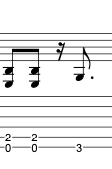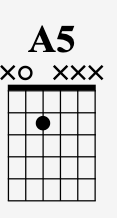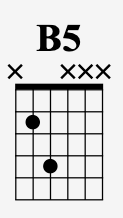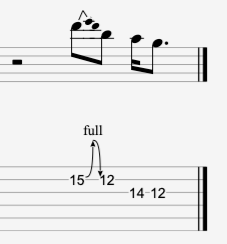The Ultimate "I Love Rock N Roll" Guitar Lesson
Unlock this instantly identifiable rock riff in this guitar lesson on how to play "I Love Rock 'N Roll" as recorded by Joan Jett and the Blackhearts.
Whether you are a beginner or a pro, this rock riff should be a part of your vocabulary. In this post, you'll gain deeper insight into essential rock guitar techniques and how you can develop them, so you can use them in your own music and have a lot of fun playing rock guitar.
Who wrote I Love Rock N Roll?
"I Love Rock 'n' Roll" was originally written by Alan Merrill and Jake Hooker, and was first recorded in 1975 by the British rock band The Arrows.
However, later in 1981 it was covered by Joan Jett & the Blackhearts, and released as a single from her album using the same title. The song became a defining tune for Jett’s career and was her highest-charting hit song which made it all the way up to #1 on the Billboard Hot 100.
I Love Rock N Roll Chords
“I Love Rock N Roll” is all based around just 3 chords. The song is in the key of E and uses a type of chord found in a ton of rock songs called a power chord. The chords you’ll need are E5, A5, and B5.
For E5 play this:

A5 this:

And finally, B5 can be played in the 2nd position like this:

In their simplest form power chords use just 2 notes, the root and 5th of the scale, and that is why you see the number 5 after the letter name.
Adding rhythm to the chords
Once those 3 chord shapes are feeling comfortable try to add some rhythm in with the chords. One of the key rhythmic factors of this song is the use of 2 eighth-notes and then a rest right after. These eighth-notes should be played as downstrums with the strum hand, and then immediately after playing them your strum hand should come down on the strings and mute them for the rest like this:
 Another theme that comes back throughout this guitar style is a little bluesy note on the 3rd fret of the 6th string in between the chord changes. This note comes in on the “e” of 4, which is a 16th-note syncopation adding excitement and energy to the riff. Next, try following this up with an A5 and B5 using the same eighth-note rhythms and rest as seen earlier in the figure.
Another theme that comes back throughout this guitar style is a little bluesy note on the 3rd fret of the 6th string in between the chord changes. This note comes in on the “e” of 4, which is a 16th-note syncopation adding excitement and energy to the riff. Next, try following this up with an A5 and B5 using the same eighth-note rhythms and rest as seen earlier in the figure.

Substituting power chord shapes for basic open-position chords is a great way to take any song and make it sound more rock. This works particularly well when playing with a distorted guitar tone. For example:
 instead of
instead of
 instead of
instead of 
 instead of
instead of 
The cool thing about power chord shapes is that they typically are easier to play and more moveable as well. Plus you can play the A5 power chord for an A major or an A minor chord as it doesn’t contain the 3rd of the chord. So in a way using them requires less thinking than typical major and minor chord shapes. This frees the player up to focus more on just rocking out and having fun vs. having to work harder thinking about the chord changes.
Tip: Remember for this style of playing to really hit, you’ll want to really focus on the timing and lock into the drums and other musicians playing. For practice with this play along to the actual recording or a metronome.
Scales and Riffs
Once you have the chords and rhythms down next try adding in some riffs. Throughout the song, there is this short little scale sequence that appears over and over as a musical theme or riff. This riff uses just 5 notes and strictly just walks down an E minor pentatonic scale starting on the root note like this:

This riff functions as a “Call and Response” type of pattern to the main melody of the tune. This riff can also be played with a bend two octaves higher and has more of a typical lead guitar sound to it.

As mentioned the scale pattern that this riff comes out of is the E minor pentatonic scale. In the open position this scale can be played like this:

To play these notes on your guitar start on the 6th string and play:
6th string frets = 0, 3
5th string frets = 0, 2
4th string frets = 0, 2
3rd string frets = 0, 2
2nd string frets = 0, 3
1st string frets = 0, 3
Notice how the lower riff starts on the 4th string of this scale and then descends down to the 6th string 3rd fret right in a row. This is a great example of the pentatonic scale at use in rock music.
You could also play the same scale up the octave at the 12th fret as well like this:

To play these notes on your guitar start on the 6th string and play:
6th string frets = 12, 15
5th string frets = 12, 14
4th string frets = 12, 14
3rd string frets = 12, 14
2nd string frets = 12, 15
1st string frets = 12, 15
Each one of these scales has 3 root notes in it, these are bolded above and are great landmarks to know, to later be able to move these types of patterns to different keys.
Conclusion
When it comes to rock guitar, "I Love Rock 'n Roll" by Joan Jett is a classic example of the essential techniques and skills needed to play in this style. The song features a driving rhythm, a catchy melody, and a guitar riff that's instantly recognizable. As a guitar player, learning how to play this song can help you develop your rock guitar playing.
To play "I Love Rock 'n Roll" on guitar, it's important to have a strong foundation in the basic elements of rock guitar style. This includes techniques such as power chords, strum-hand muting, down-picking, alternate picking, and the pentatonic scale. Using power chords in a simple way creates a big rock sound and is a staple in this style. Strum-hand muting is also crucial, as the louder you turn up your amp, the more of the subtle nuances you may have missed become prevalent. Learning the pentatonic scale is a great way to improve your picking accuracy.
The main riff in "I Love Rock 'n Roll" is a perfect example of all these techniques in action. It's based on a simple power chord progression, and combining everything creates a driving, rhythmic anthem. To really nail it, pay attention to your timing and dynamics. Remember to keep a consistent rhythm and use palm-muting to create a percussive effect. The down-picking and alternate-picking techniques will help you play the riff with precision and speed. And don't forget to practice the pentatonic scale to develop your soloing skills.
Overall, learning how to play "I Love Rock 'n Roll" by Joan Jett on guitar is a great way to develop your skills in the rock genre. By mastering the basic elements of rock guitar, you'll be well on your way to playing this classic song like a pro. So grab your guitar, turn up the volume, and for another great rock lesson check out “Run Through The Jungle” next!
Like this blog post? Get Jon’s best guitar lessons straight to your inbox.
